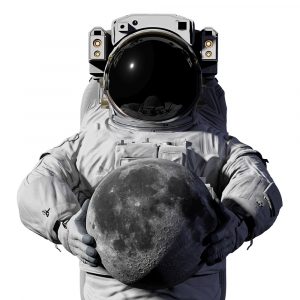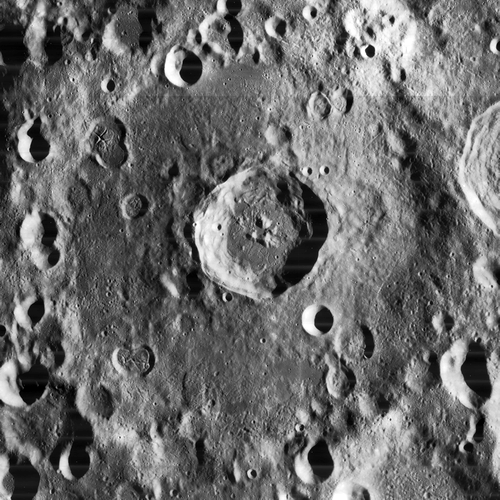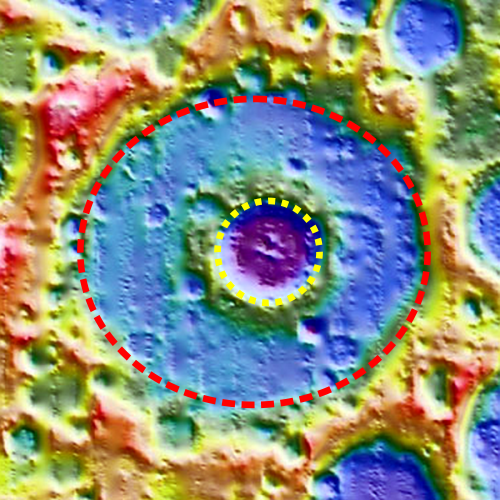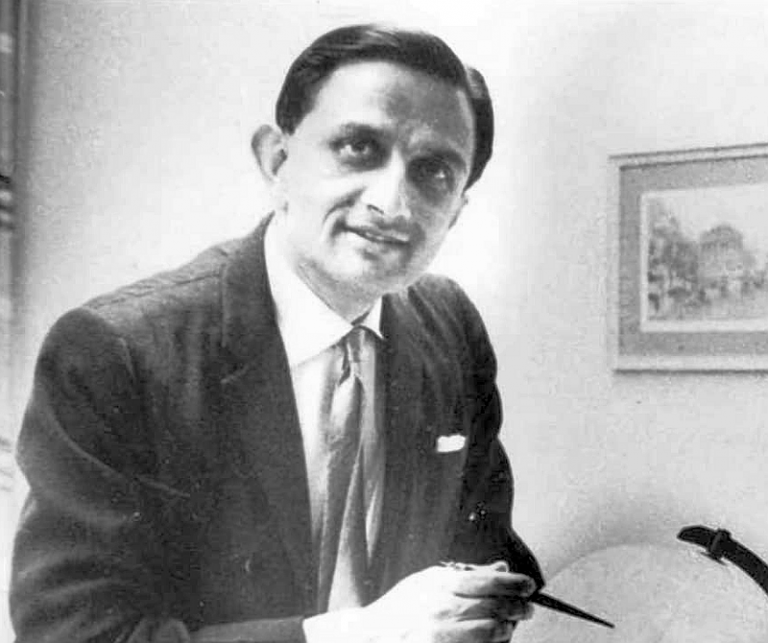Although he was not specifically an astrophysicist, Dr. Albert Einstein (1879-1955) referred to the Moon in several of his works. In turn, a large crater on the Moon, along with three adjacent “satellite” craters, were named in his honor – as well as the minor planet 2001 Einstein (1973 EB).
After an early proposal failed to be accepted, the official designation of a 180-kilometer-wide crater for Einstein (at 16.60°N 88.65°W) was adopted in 1964.
Finding Einstein
The Lunar crater that today bears Einstein’s name is on the far western limb (visible edge) of the Moon, making it nearly impossible to view from Earth even under the best conditions.
Some sources claim the crater was first identified by the astronomer Sir Patrick Alfred Caldwell-Moore in 1939, and it was originally designated as “Caramuel” by the renowned selenographer Hugh Percy Wilkins of the British Astronomical Association as a tribute to the Spanish philosopher and mathematician Juan Caramuel y Lobkowitz.

Following Einstein’s death in April 1955, the United States Naval Observatory in Washington, D.C., asked Wilkins to suggest a Lunar crater suitable to permanently bear the legendary physicist’s name; Wilkins selected Simpelius D, a 54-kilometer-wide satellite of Crater Simpelius, near Crater Schomberger in the Moon’s southern region.

Despite the suggestion, Wilkins’ choice of Simpelius D for Einstein was set aside. In 1963, the astronomers Ewen Adair Whitaker and D.W.G. Arthur selected instead the crater that Wilkins had previously named as Caramuel. A year later, that designation was formally accepted and Caramuel became Einstein.

Einstein Crater Relativity
One of the unique features of Crater Einstein is that its primary satellite crater, 50-kilometer-wide Einstein A (16.69°N 88.25°W), is located almost directly at its center.
As seen in the two photos above, the main Crater Einstein has a rim that appears to be soft and eroded, which marks it as a much older formation. The rim of Einstein A, on the other hand, is much more pronounced, signifying that it is a newer formation.
In the color-enhanced photo above, in which purple, blue and green shading denotes lowlands, and yellow, red and orange shading denotes highlands, Crater Einstein is encircled in red, with Einstein A encircled in yellow.
There are only two ways to live your life. One is as though nothing is a miracle. The other is as though everything is a miracle.
Albert Einstein
In addition to Einstein A – the “crater within a crater” – Einstein’s two other satellite craters are Einstein R (13.83°N 91.88°W) and Einstein S (15.10°N 91.67°W), each measuring about 20 kilometers in diameter.

Further Reference
Numerous notable biographies of Albert Einstein are available if you’re interested in reading up on his amazing life. Here are some of the references we used for this article on Crater Einstein:
- Albert Einstein (Nobel Prize biography)
- Albert Einstein (Biography.com)
- Albert Einstein (Official Website)
🌙
-
Sale!

Name A Crater On The Moon
$99.00 – $249.00







